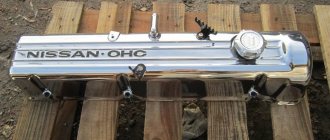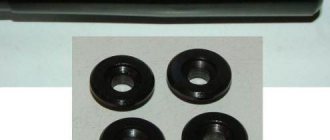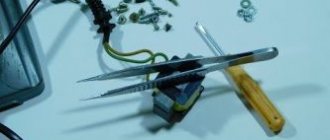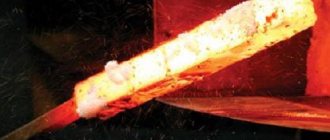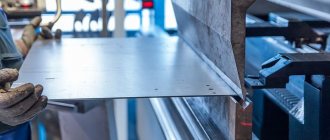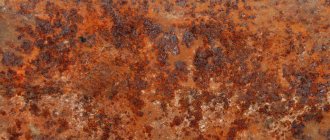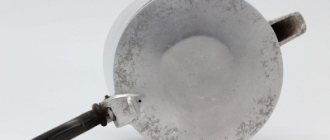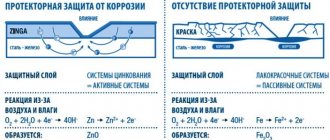Hello everyone) The recording makes no claims to the scientific nature and purity of the experiment.
When using various types of coatings in body repair - from primers to anti-corrosive coatings - you always ask the question: “What is the best way to protect bare metal, what combination of materials to choose?
On forums, on Drive, in garages - everywhere there are crowds of different people with cosmic convictions about the use of this or that product. Moreover, opinions are most often not supported by anything other than personal speculation, and sometimes even contradict each other and common sense.
I decided to figure it out for myself, to see with my own eyes how this or that protective material behaves. To do this, I took several plates of metal, cleaned it, degreased it, piled it with all sorts of shit, and hung it on the street in the open air.
? — Why didn’t you use a saline solution or just dip it in water? “I don’t like it that way, I want it in the fresh air, where they work on the car.” ? — Why didn’t you use all kinds of sandwich combinations? - Because this would lead to a large number of samples, I don’t need these garlands in the yard.
I thought about it and decided that for the purity of the experiment, it is necessary to understand the capabilities of each material separately - from this it is easier to put together a picture of their joint work. For example, if there is rust after the converter and after the acrylic primer, then there is no point in smearing one on top of the other and expecting that there will be no rust.
As subjects, I took the materials that I use in my work:
From left to right: 1. Movil. Trushny, from the country in which I was born - the USSR. 2. Cannon fat. Modern. 3. Rust converter based on phosphoric acid. Not the tsinkar that has a sprinkle, the other one, Belarusian, cheap. 4. Cartonin F rust converter based on iodine. Polish product. 5. 1K Spectral epoxy primer in a can. 6. 2K Epoxy Primer Novol. 7. 2K Etching Primer Novol. 8. 2K Acrylic primer Reoflex.
Now the samples they processed:
From left to right: 1. Movil / Cannon fat. On the back
— not processed in any way, CONTROL, see below 2. Belarusian Tsinkar.
Applied, not washed off. 3. Cartonin F. After the reaction, the coating becomes black. 4. 2K Epoxy primer. On the back
- 1K Epoxy primer in can 5. 2K Etching primer / same, but
+ on top
2K Acrylic primer.
On the back
is just 2K Acrylic primer on bare metal.
Back sides of some records:
In total, we have 9 different coating options, not counting the control plate. All are hung outdoors.
They've been hanging for a couple of weeks now; with the first rains, the control plate became a little rusty. I’ll tell you about the rest in the next post; not enough time has passed to draw conclusions. I plan to marinate them outside all winter.
Before it’s too late, you can add some more options, write who wants to see which ones.
Share the post, it may help someone avoid mistakes.
Metal pipes have not yet completely disappeared from our everyday life, having given way to plastic ones. Because metal, compared to plastic, is more resistant to high pressure, can withstand significantly greater mechanical loads, is resistant to temperature changes, and has a much lower coefficient of thermal expansion.
The main enemy of metal is corrosion. This is especially true for underground metal pipelines.
Functions and material of the fence
The fence is intended for simple and specialized fencing of territory: privately owned land plots, parking areas, recreation areas, construction and specially protected sites, animal pens. Also, fences are often a decorative element in landscape design or form a single composition with architectural solutions.
This variety of functionality makes it possible to use different materials for their construction: a regular wooden or metal picket fence, a decorative picket fence in the “Ranch” style, multi-colored profiled sheets, chain-link mesh, welded, sectional, forged, asbestos-cement and concrete spans. Like any structure, a fence requires the creation of some kind of base on which the material is attached. For a fence, the pillars are such a basis.
Pole material
Regardless of the choice of material for the fence itself, the posts can be made from:
Metal advantage
The universal material for making fence posts is metal products, because in the vast majority of fence installation cases welding is used.
A special quality of metal poles is their durability. No matter how you treat a wooden beam, it will rot much faster than the metal will collapse.
The process of metal corrosion occurs on average at 0.15 – 0.2 mm per year. This depends on external weather and climatic conditions, the composition of the metal and the quality of its processing. A positive advantage of metal poles is reliability and strength. Asbestos concrete pipes are not subject to corrosion and do not require additional maintenance, but they are fragile and cannot withstand rough mechanical loads.
Chemical methods
Chemical methods involve the use of the following groups of drugs:
- rust converters;
- acids (primarily phosphoric acid);
- folk remedies.
Orthophosphoric acid
This substance is a classic solvent and is included in many rust control products.
The method of using phosphoric acid is described below:
- The substance is applied in a thin layer to the area affected by corrosion.
- Next you need to wait for 30 minutes until the reaction is completed.
- The procedure is completed by wiping the treated surface dry.
Phosphoric acid removes traces of rust and also promotes the formation of a phosphate water-repellent film. This film slows down the process of metal oxidation, preventing further development of the corrosion process.
To remove rust, use a 30% acid solution. The advantage of orthophosphoric acid compared to other acids (for example, sulfuric acid) is that it has a more gentle effect on the metal.
Rust converters
The principle of rust conversion products is to convert corrosive products into a harmless or protective layer, which can then be treated with paint or varnish.
Listed below are the most famous rust converters available on the market:
- VSN-1. After applying this acid neutralizer, the treated area turns gray. All that remains is to wipe off the stain with a dry cloth along with any remaining rust.
- Spray aerosol based on zinc “Zinkor-Auto”. This product is a degreasing solution that can remove traces of corrosion from a metal surface. After applying the solution, a protective film is formed on the surface.
- Rust converter SF-1. The composition is made on the basis of phosphates. Used to treat steel, cast iron, aluminum and galvanized surfaces before applying varnish or paint. The modifier has an inhibitory effect, since the film that appears on the metal after its processing extends the service life of the painted surface by 10-12 years.
- Rust modifier "Berner". The drug has a deoxidizing effect. The basis of the modifier is molybdenum. The product is effective even on heavily rusted surfaces. For example, the converter is used to process rusty bolts that cannot be removed using standard means. Available in spray form.
- Anti-corrosion agent B-52. This acid modifier is available in gel form. Its main advantage is the lack of spreading over the surface. After the rust has dissolved, the remaining gel is washed off the metal.
Corrosion
Metal corrosion is a natural phenomenon that cannot be completely prevented, but this destructive process can be significantly slowed down. The oxidation process occurs with the participation of oxygen and aqueous solutions containing acid, alkali or salt.
Iron is not found in nature in its pure form, but is found in iron ore. Humanity invented the production of steel and came up with ways to preserve it. Factories use methods of phosphating steel by immersing it in various solutions, as well as electrochemical treatment. This coating is in the nature of a primer and requires subsequent painting. Steel is coated with other metals. Cheaper ones are aluminum and zinc.
There are silicate coatings - these are different types of enamel. Enamel is fragile and not entirely suitable for a fence. Cement has approximately the same expansion temperature as steel and serves as an insulator against aggressive environments. Good insulation is a polymer film applied in several layers in the factory.
Preventive actions
To prevent the harmful effects of corrosion, it is recommended to use special chemical protection agents. These agents include inhibitors, which are substances that slow down or completely stop a particular chemical process. As a result of the action of the inhibitor, a thin coating in the form of a protective film appears on the surface of the material. It is this film that protects the metal from rusting.
One of the most popular inhibitors today is “Rust stop”. The drug has a penetrating effect, as a result of which moisture is removed from the material and a polymolecular layer is created on the surface. The product is non-toxic and easy to use.
Treatment
The durability of the metal depends on the grade of steel. More precisely, there is alloy steel with different additives. But for a simple fence, this is an expensive pleasure. Usually they use factory rolled metal, or make poles with their own hands from what they can get. For temporary fences, poles welded from pieces of iron or previously used but still strong water supply pipes are suitable.
It is difficult to clean the internal cavity of the pipe, but the rust is removed from the outside using an iron brush and treated with a grinder or grinder. If necessary, degrease and apply a primer for metal, for example, GF-021. After the primer has dried, the pipe is painted in two layers.
To paint metal, the most common oil paint PF-115 is suitable. For the lazy, there is three-in-one paint. It neutralizes rust, primes and creates a protective surface.
But in practice, it is better not to do without preliminary mechanical treatment; it is necessary to at least clean the metal with sandpaper.
The best solution for choosing new fence posts would be a combined version of metal coated with zinc and polymer film. Factory metal rolling produces painting, observing all technologies. It is best to purchase poles that are ready for installation, as this will significantly save time and labor costs. However, this option cannot be called financially economical.
In practice, most often iron poles are primed and painted with oil paint or bitumen varnish.
There are special cans of spray paint that are convenient to use when welding. Powder coating will be more expensive and technically more difficult. The thinner the coating layer, the more durable the protection. Therefore, apply several layers with a spray or thoroughly rub in with a brush, avoiding air bubbles that provoke an oxide reaction.
Soil is a more aggressive environment than air. Therefore, the part of the metal located in the ground is insulated with concrete or bitumen mastic. Rolled insulators are not suitable for these purposes. Scale generated during welding stimulates metal corrosion. It must be removed with a grinder.
Chemistry on guard
Protection of pipelines from corrosion according to SNiP includes many different comprehensive measures, but I want to give some specific methods that great science so graciously “gives” to us, and which I was able to put into practice:
Gift #1: External insulation
We figured out above that most troubles occur due to chemical reactions that occur as a result of long-term contact of metal with the ground. Therefore, the simplest and surest step is to eliminate it completely. Moreover, in this case, it is also easy to protect pipes from freezing, that is, “killing two birds with one stone.”
I will describe to you the option that I used myself, as well as alternative methods of insulating the pipeline being laid:
- Petroleum bitumen . It was this material that I took as the basis for protecting metal from rust in underground conditions. Its price fluctuates around 18-22 rubles per kg, which is quite favorable to the family budget. The working process:
- First of all, I cleaned the surface of the pipeline until it was shiny with a steel brush;
To do this, I recommend using a grinder with an appropriate attachment. This way the task will be completed much faster and with better quality.
Grinder with a steel brush attachment
- Then I diluted part of the purchased bitumen with gasoline to obtain a bitumen primer in the following proportions:
| Substance | Component |
| Bitumen | 1 |
| Petrol | 3 |
Mixing bitumen primer
- Carefully treated the metal surface of the water main with the resulting solution;
I do not recommend neglecting this stage, since it significantly increases the level of adhesion of iron to the oil substance.
- Next, I prepared bitumen mastic over the fire with the addition of crushed asbestos to enhance the strength characteristics of future insulation. Cement and kaolin are also suitable for this purpose;
Making bitumen mastic with your own hands
- I applied the first layer of hot mixture, after which I wrapped the pipeline with waterproofing . I used a model with the following characteristics:
| Parameter | Description |
| Base | Fiberglass |
| Weight of one square meter | 2500 g |
| Daily moisture absorption | No more than 1.2% |
| Absolutely waterproof | Three days of constant exposure |
| Price | 43.5 rubles per 1 m2 |
Waterproofing rolls in stock
- Then he repeated the procedure two more times. For your region, you may need less or, conversely, more layers of bitumen with waterproofing, depending on the corrosive activity of the soil, which is affected by its moisture level, chemical composition, acidity and structure;
Protecting a gas pipe with bitumen waterproofing
- Polyethylene . It is worth noting two completely different situations:
- The first includes the personal execution of the plan. This method can be called the easiest to implement, since you just need to wrap the pipe in several layers with polyethylene cloth and secure it with mounting tape. But this material itself has low strength characteristics, so I would be careful not to use it to protect long sections of the highway;
- In the second, we are talking about the factory application of reinforced extruded polyethylene. That is, you buy metal pipes that have a special protective layer. Of course, such products will cost more, but they will provide quite effective protection against corrosion;
Factory application of extruded polyethylene to a steel pipe
- Polyurethane foam . Here you can also take two roads, but in any case it is worth immediately noting the very high thermal insulation qualities of the finished anti-corrosion protection:
- Use special polyurethane foam shells . They are two halves of a cylinder, which are put on the pipeline on both sides and are joined to each other, creating a tight connection;
Ready-made casings for water and gas pipelines
- Injection of liquid polyurethane foam between the pipe body and a pre-installed sheath of extruded polyethylene or other suitable insulating material. After the substance hardens, the seams are completely absent, which, of course, significantly improves the quality of the insulation, although the process itself is more labor-intensive to implement.
Graphic representation of a pipeline, the waterproofing of which is created by pouring liquid polyurethane foam
External insulation is not limited to the above options; here you can use many more moisture-resistant materials that can take a cylindrical shape. Therefore, in any case, also be guided by the current offers of a specialized store located near you.
Gift #2: Internal Insulation
Steel pipes with internal sand-cement insulation
As I noted above, liquid transported through pipes can also provoke the occurrence of corrosive processes, and here things are somewhat more complicated. The fact is that without special equipment at home, high-quality internal insulation is impossible. Then all that remains is to order the appropriate services from specialists or immediately buy already protected products.
The most common option today is to apply a cement-sand mixture to the inner walls of the pipeline and then crimp it using a special pulled device. The result is a smooth, non-corrosive coating.
Inside view of a protected pipe
When I ordered this type of service, I was offered the following prices:
| Pipeline cross-section, mm | Cost of internal waterproofing per linear meter, rub. |
| 159 | 401,5 |
| 219 | 460,7 |
| 273 | 519,3 |
| 325 | 591 |
It is noteworthy that the instructions allow processing of both new metal pipes and old ones.
petroleum bitumen can also be . In this case, products with a large cross-section are dipped into a liquid solution, and the joints are then processed manually. And samples with a small diameter are coated after welding, by passing a mixture with a hollow copper cylinder through them under the influence of a direct electric current. Due to the influence of electricity, bitumen particles adhere tightly to the iron, creating a thin, reliable film.
Pipe with internal bitumen insulation
Gift #3: Active Insulation
This includes electrical protection methods, which I was quite able to implement on my own. Here is their description:
- Cathodic protection:
- We apply a negative potential to the pipeline, transferring it to the cathode zone;
- Next to the pipes we bury iron pipes , pieces of rails or other ferrous metal products that will take on the role of an anode;
A steel rail is quite suitable as an anode.
- We connect a source with negative direct current to the pipeline;
- We connect a source with positive direct current to a rail or other product that you used as an anode;
- This creates a closed circuit of electric current , which flows from the positive pole to the anode grounding, spreads over the ground, hits the pipe and then to the negative pole;
Scheme for implementing cathodic protection of a water supply main
- Since current comes out of the rails in the form of positive metal ions, it is the rail itself that is gradually destroyed, and not the pipe . So much for chemistry;
- Tread protection. It is much easier to implement, since it does not require an external power source . This is the option I prefer to use:
- We place a rod of metal next to the water supply, which has a negative chemical potential , which exceeds that of steel. This may be a product made of zinc, magnesium or aluminum;
- We connect it to the protected structure using a cable;
I also recommend filling the protector with a special mixture of salts, which facilitates the process of its corrosion and thereby increases the performance of its protective functions.
The diagram shows the tread protection of pipelines
| Symbol | Element |
| 1 | Priming |
| 2 | Protected pipeline |
| 3 | Metal protector with high negative chemical potential |
| 4 | Salt mixture |
- The entire impact will fall on the anode protector, excluding pipe corrosion;
- Once the zinc or magnesium rod is completely destroyed, it must be replaced;
- Drainage. With its help, pipelines are protected from stray currents:
- We connect the pipe with a cable to the nearest electrified source , through which the currents that enter it are returned;
- Metal ions stop going into the soil, due to which corrosion processes stop.
Thus, all active methods of protection come down to preventing the loss of metal ions due to “sacrifice” or getting rid of stray currents.
I recommend using an integrated approach to waterproofing your pipeline. That is, combine external, internal and active protection. This will give the most effective result, allowing you to extend the operational life of the highway for decades.
Ground influence and installation
The choice of metal poles also depends on the installation method, and this, in turn, depends on the condition of the soil. For a light fence, you just need to drive a post into the ground if it is dense (gray soil, clay, sand). Two people are involved in the work - one drives it in, and the other holds the post, checking it for level in two vertical planes.
In order not to damage the top of the pillar with blows, some kind of homemade iron cover is put on it.
The most dangerous, wear-resistant area of a pole is where it comes out of the ground. Here two environments with different temperatures and mechanical loads meet. For this reason, microcracks occur, contributing to the destruction of the structure. The quality of insulation of this place needs to be given more attention:
- When soil heaves, the butting method is used. Using a hand drill, pour a small sand cushion into the drilled hole and compact it. Insert the post strictly vertically and fill the hole with crushed stone and sand in small portions. Each portion is compacted by pouring water. The last 20 cm of the pillar is filled with concrete.
- There is also a more stationary method of pit concreting. The posts must have a welded heel, or a through opening 15-20 cm in length is cut out in the lower part, into which concrete is poured. This is necessary for better fixation of the post.
- In heaving soil, you can fill the heel of the pillar with concrete by 30-40 cm, and cover the remaining distance to the surface with a plastic pipe used for sewerage. A large-diameter plastic pipe is placed on a metal one, leaving 5-10 cm above the ground surface. The cavity between the pipes is filled with cement, and the outside is filled in, tamping the excavated earth.
- If groundwater is located close to the surface, or the ground is swampy, you cannot do without a strip foundation for the fence.
The length of the pillars going into the ground must be at least one third of the total length of the pillar. The depth of concreting is selected to the depth of soil freezing.
From the video below you will learn how to properly install a fence post.
